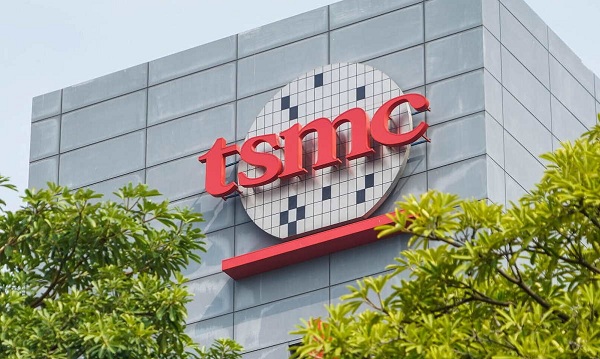- Motion Education aces the JEE exam, recording a selection ratio of 68.01%
- Mars Wrigley launches BOOMER Jelly on Top Boomer, Goes Wobbly with Bumrah for Maximum Fun
- The Shoreline Unveils Premier Co-op Apartments in New Rochelle, Redefining Luxury Living
- Vedanta FACOR and CFlo Partner for Sustainable Chrome Beneficiation in Odisha
- Authorized Economic Operator (AEO) Status Now Extended To The Gem & Jewellery Sector
- Cocobellacb.com Reveals Blooms That Last: A Guide to Selecting the Ideal Faux Floral Shop for Faux Arrangements
- Housing Guards Elevates Lumber Supplies in Oshawa with Unmatched Quality and Service
- Upcore Technologies Elevates Brand Presence with Revamped Website and Expanded Service Offerings
- Infinity Learn by Sri Chaitanya announces breakthrough results in JEE Main 2024
- Cumbria Hotels Revolutionize Guest Experience with Premier Laundry Services from Shortridge Laundry
- Summit Hotels Doubles Rewards & Offers Exclusive Perks with 'Get Rewarded More'
- Indo Korea to Foster Collaboration in Art and Culture Promotion
- Skin Health: A Priority for All Ages
- Renowned Filmmaker Rakesh Srivastava Conducts Inspiring Workshop at AAFT School of Cinema
- Alia Bhatt and Ranveer Singh Show the Way in MakeMyTrip\'s New Films
 Mail to a Friend Mail to a Friend |
|
     |
TSMC Once Again Broke Through the Limits of Semiconductor Materials

TSMC once again broke through the limits of Semiconductor Materials, one step further from 1nm.
As silicon-based semiconductors are approaching their physical limits, the industry is looking for other alternative materials. Recently, research conducted by National Taiwan University in collaboration with TSMC and the Massachusetts Institute of Technology found that two-dimensional materials combined with semi-metallic bismuth can achieve extremely low contact resistance, close to the quantum limit, and published this research finding in the journal Nature. This is a huge breakthrough for semiconductor manufacturing processes below 1nm.
The current mainstream semiconductor process has developed to 3nm and 5nm, and even IBM has recently launched 2nm. The number of transistors per unit area is now approaching the physical limit of silicon. Although the breakthrough of the manufacturing process is restricted by the production equipment, there are also factors related to semiconductor materials.
Two-dimensional materials such as graphene have been regarded as materials for next-generation semiconductors since their discovery, but most two-dimensional materials have been unable to replace silicon-based semiconductors due to the limitations of high resistance and low current. The MIT team first discovered that the combination of two-dimensional materials and semi-metal bismuth can effectively reduce resistance and improve current transmission efficiency.
TSMC?s technology research department then optimized the bismuth deposition process. Finally, the NTU team used a helium ion beam lithography system costing tens of millions of dollars to successfully reduce the component channel to the nanometer level before reaching this research result.
It is worth mentioning that the two-dimensional material used in this paper is molybdenum disulfide (MoS2), and its contact resistance has reached 123-ohm microns by combining with semi-metal bismuth.
This multinational cooperation started in 2019 and lasted for one and a half years. The National Taiwan University research team participating in this transnational research is the National Taiwan University Institute of Optoelectronics. Professor Wu Zhiyi from the Organic Optoelectronic Materials Analysis and Research Laboratory and others participated in the research.
The main projects of the laboratory are materials such as graphene, solar cells and OLED. Wu Zhiyi mentioned that after using bismuth as the key structure of the metal electrode, the transistor performance of the two-dimensional material can be comparable to that of silicon-based semiconductors, and it can be compatible with the current mainstream silicon-based process technology, which helps to achieve a breakthrough in Moore's Law. Although it is still in the research stage, the power-saving and high-speed features it provides have great potential.
The leading researcher of MIT is Dr. Pinjun Shen, who is also the first author and corresponding author of this paper. He said that after switching to two-dimensional materials, the process can be broken to below 1nm, which is closer to the limit of the thickness of solid-state semiconductor materials. The material properties of semi-metallic bismuth can eliminate the barriers on the surface of the two-dimensional material, thereby achieving ultra-low contact resistance, and the deposition of semi-metallic bismuth does not destroy the atomic structure of the two-dimensional material.
From this breakthrough, we can see how much TSMC has invested in industry-university research-its industry-university alliance program has united many famous universities to study semiconductor technology. For example, in March this year, TSMC and Taiwan Jiaotong University jointly developed the thinnest boron nitride two-dimensional insulating material, which can also be used for breakthroughs in the 1nm process.
User :- Rachel Ye
Email :-fadjdagd@gmail.com
Url :- https://www.apogeeweb.net/industry-news/tsmc-broke-limits-of-semiconductor-materials.html










